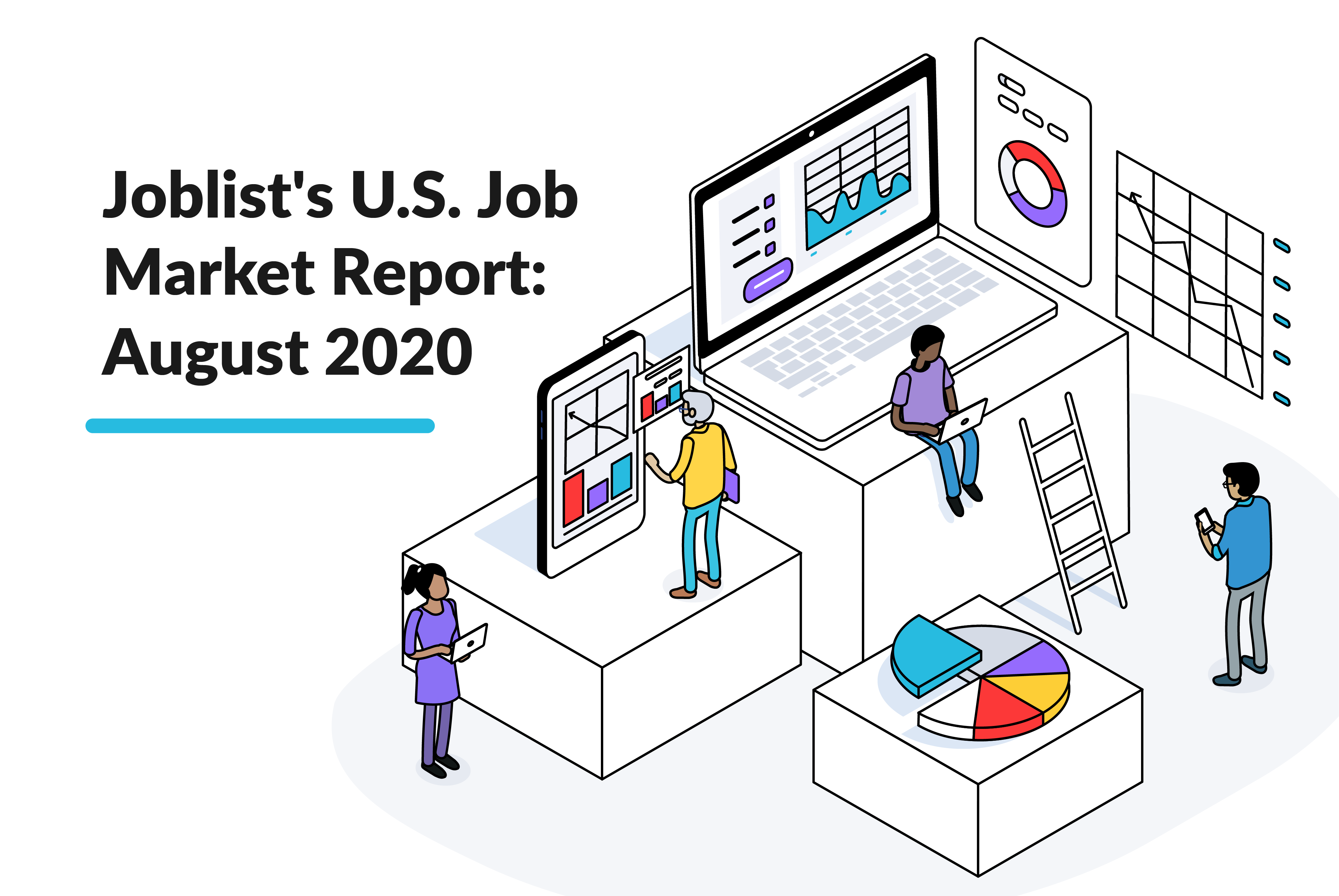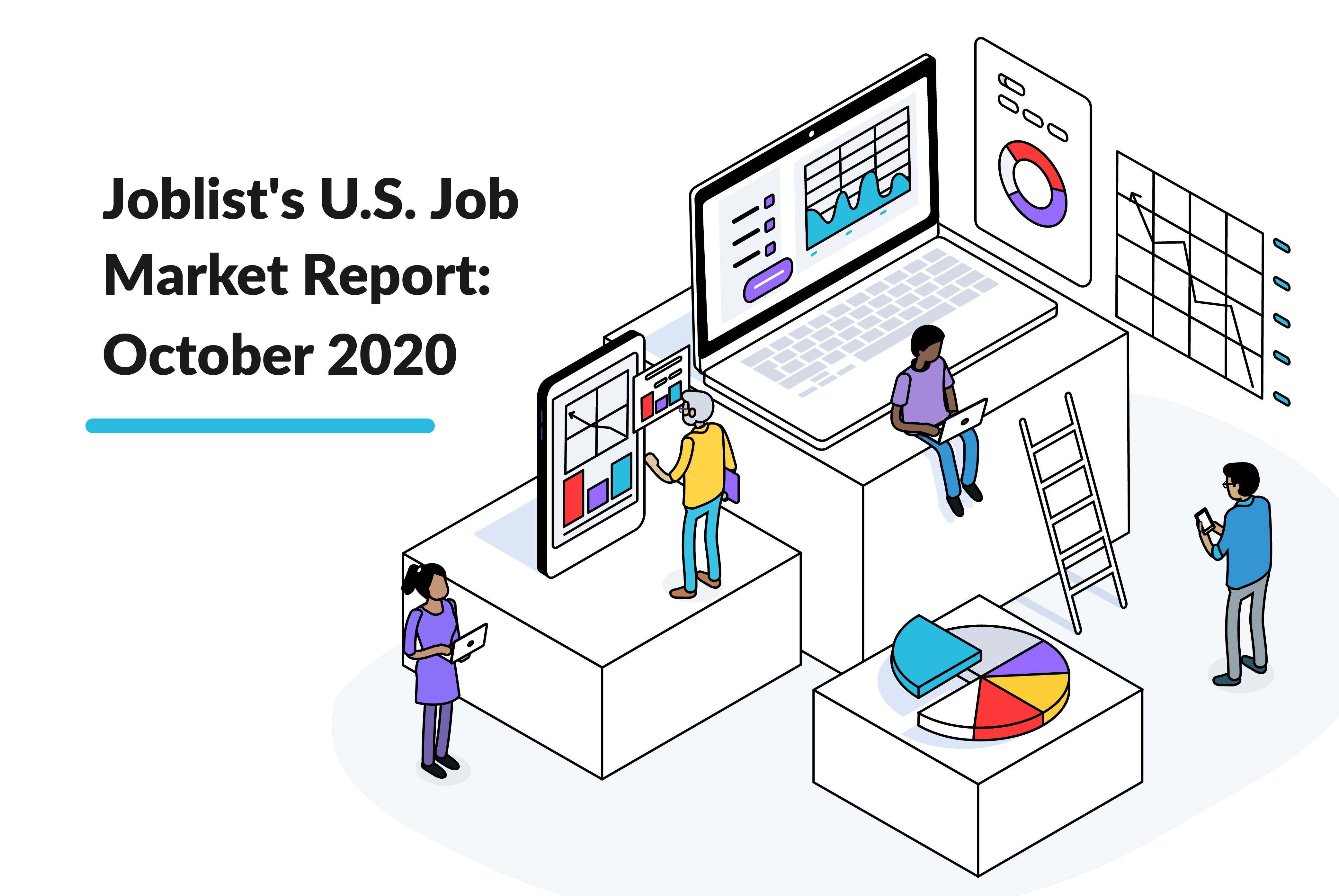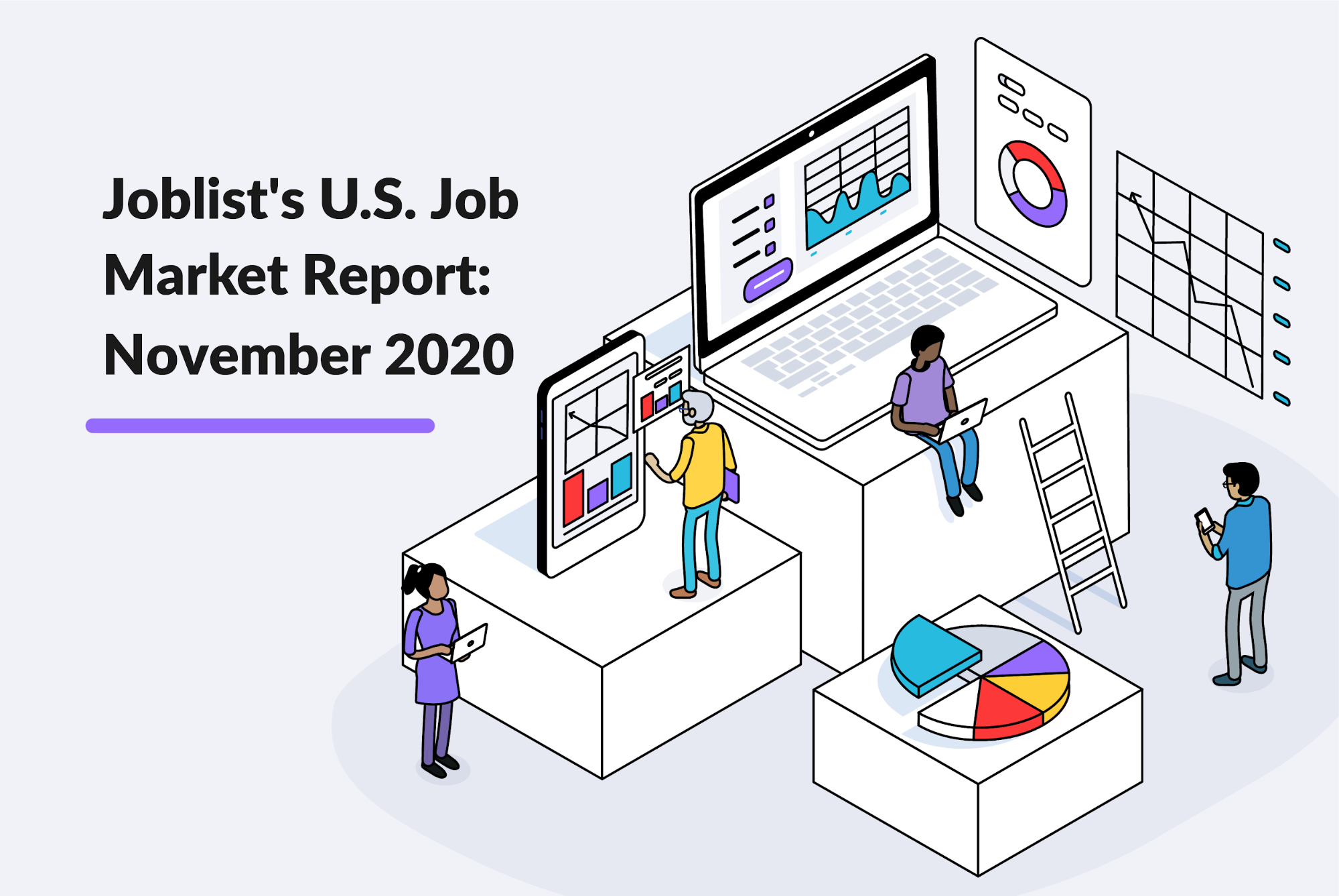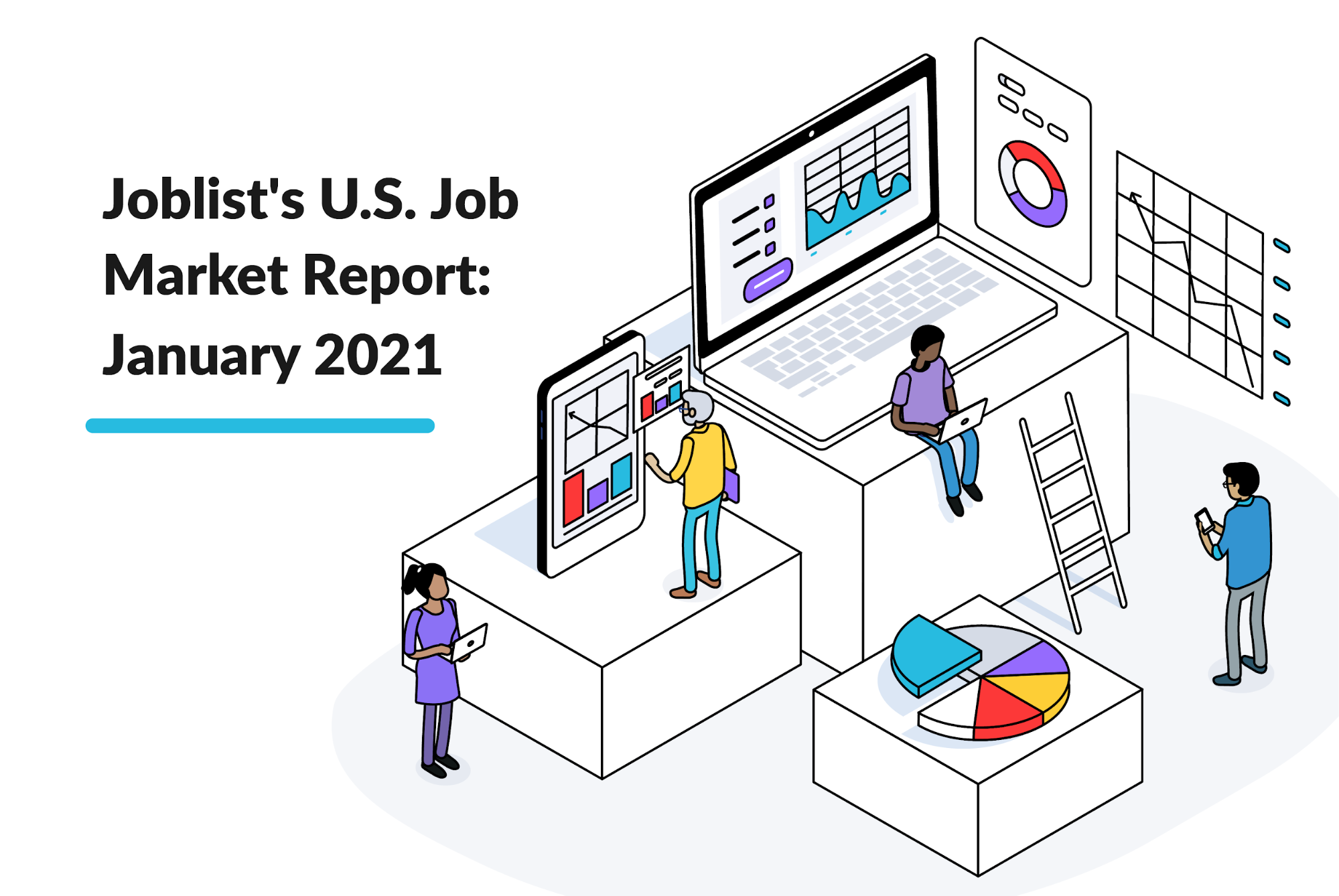- Over 33% of unemployed or furloughed job seekers on Joblist have been out of work since the start of the pandemic.
- 20% of job seekers who are currently employed are looking for a new job for reasons directly related to the pandemic, such as new scheduling requirements, work-from-home needs, and safety concerns.
- Even as the recovery has slowed according to the BLS, job seekers reported slight improvements in the job market for the second straight month in September.
September 2020 United States Job Market Report
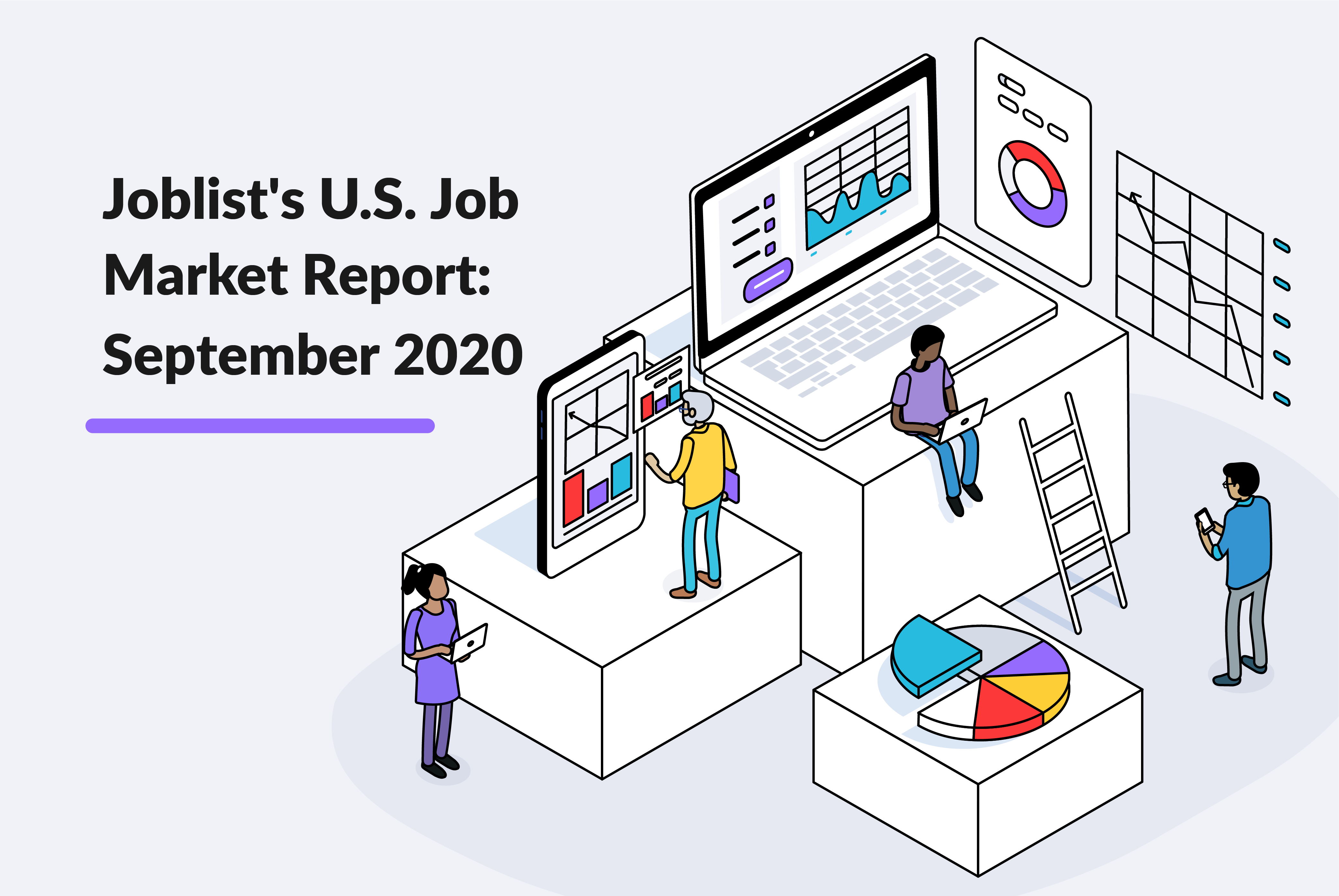
Key Insights
Introduction
Since the economic shutdown in the spring, the U.S. job market has made some progress on its road to recovery. The unemployment rate continues to decline, more jobs are added each month, and many of the particularly hard-hit industries have picked up hiring. However, we are still far from pre-pandemic levels and the recovery is starting to slow, according to this month’s Jobs Report from the BLS. With almost 11 million fewer total jobs in the U.S. market than there were in February and 26.5 million people receiving unemployment benefits in September, there is still a long way to go.
In addition to causing a major jobs deficit, the pandemic has also had wide-reaching effects on how people look for jobs and the types of jobs that they are pursuing. In order to understand what is happening right now in the U.S. job market, we surveyed thousands of job seekers — including full-time, part-time, unemployed, and furloughed workers — to ask them about their job searches and outlooks for the future in light of COVID-19.
COVID-19 Impact on Employed Job Seekers
The COVID-19 pandemic’s impact on the job market extends beyond causing massive job destruction. Many workers who remain employed have also been impacted, as the pandemic has led to new uncertainty about the future of their workplace or employment.
The effects on employed workers are varied. Some are reconsidering their current roles as they try to juggle full-time work with the demands of supervising remote schooling for their children. Others are thinking about switching jobs due to rising opportunities in other industries or safety concerns in their current role. In general, the pandemic is offering an opportunity for all employed workers to reevaluate their current job through a new lens, especially as remote openings have become more and more widespread this year.
In a recent survey of job seekers on Joblist, over 20% of employed workers reported that they are looking for a new job for reasons related to the pandemic. The most common COVID-related reasons that these job seekers cited are desiring a job with more hours (28%) and concerns about job stability (25%). A slightly smaller proportion of employed job seekers (19%) say they would like a more flexible schedule and/or prefer a work-from-home job. Fewer job seekers (12%) cite safety concerns as a reason for their job hunt. Depending on individual circumstances, the pandemic is affecting the criteria for employed job seekers in several different ways.
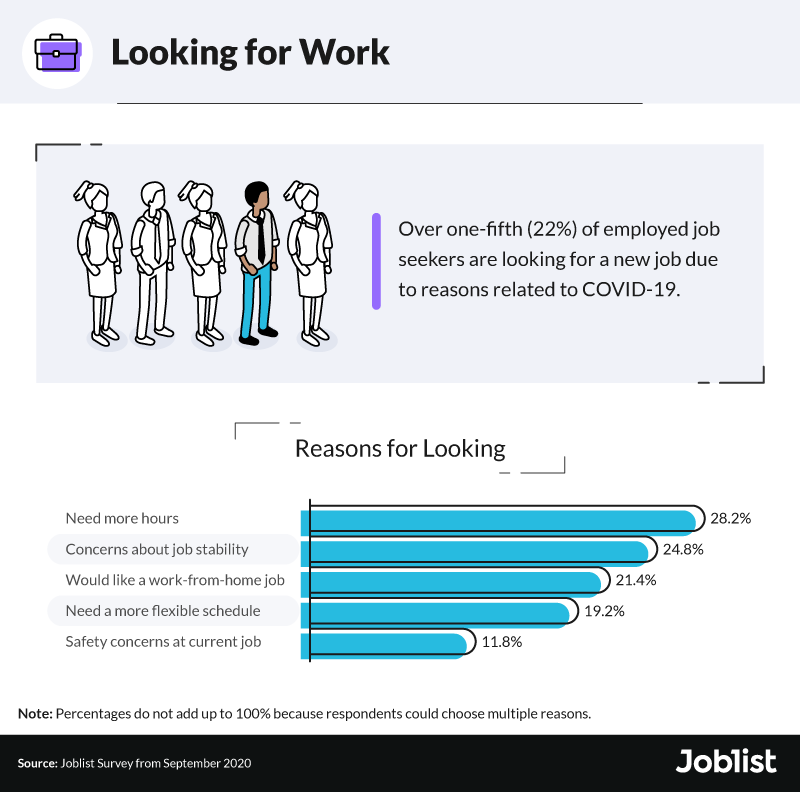
Job Search Urgency for the Unemployed
While the unemployment rate has dropped steadily from April’s record of 14.7%, it remains much higher than pre-COVID times, standing at 7.9% in September. With over 25 million still collecting jobless benefits and the duration of unemployment trending upwards, it is not surprising that a significant share of job seekers describe their job search as urgent. In a recent survey of Joblist job seekers, nearly half of survey respondents reported that they are “actively and urgently searching” for a new job.
As expected, unemployed job seekers are more likely to describe their job search needs as urgent (67%) compared to employed job seekers (42%). However, job search urgency among the unemployed varies. Nearly 42% of unemployed or furloughed job seekers reported that they were laid off or furloughed for reasons related to the COVID-19 pandemic. Interestingly, these job seekers were more likely to respond that they are “actively and urgently searching” for a new job compared to other unemployed job seekers and less likely to say that they are “just browsing.”
Over one-third of unemployed or furloughed job seekers have been without work for more than six months. These longer-term unemployed job seekers are more likely to say they are “just browsing” and less likely to say they are urgently looking for work. On the other hand, shorter-term unemployed job seekers (unemployed for less than two months) are much more likely to describe their job search as “active and urgent.” Longer-term unemployed workers may be discouraged or burned out by their job search compared to those who have just started looking for new jobs.
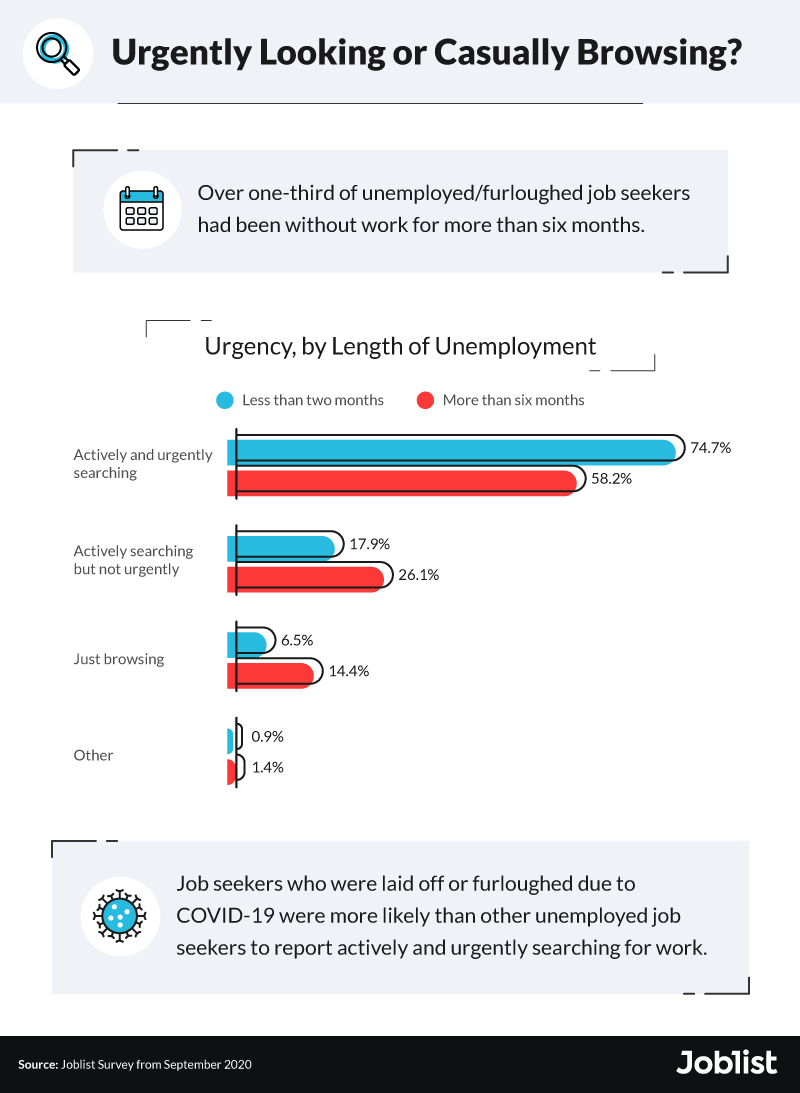
Future Outlook on Employment
The September Jobs Report from the BLS shows that employment continued to rise for the fifth straight month, with a gain of 661,000 jobs. However, the monthly trend of job gains since May appears to be leveling off. September’s new employment is less than half the job gains from August, which saw an increase of 1.4 million jobs. While the unemployment rate continues to decline, it is still 4.4% higher than February. The job market continues to show improvement, but the rate of improvement appears to be slowing.
Recent Joblist survey results indicate that job seekers perceive the job market to be less challenging than in prior months. Compared to Joblist survey respondents in July and August, fewer job seekers now say that finding a job is either “somewhat difficult” or “very difficult.” However, job seeker optimism is unchanged from August. Slightly more than one-third of job seekers think that the job market will improve next month, while 22% believe it will stay the same. Uncertainty remains high, with 29% of survey respondents unsure if the job market will improve next month.
Some industries have been badly hurt during the pandemic, while a few sectors — including grocery stores, warehouses, and delivery services — are thriving. This phenomenon is reflected in workers’ confidence in the job market. Joblist survey respondents who work in office roles view the job market as more difficult, while those employed as drivers view it as less difficult. Drivers and delivery people are also more optimistic about the future of the job market, with 45% saying they think it will improve next month compared to 35% of other types of workers.
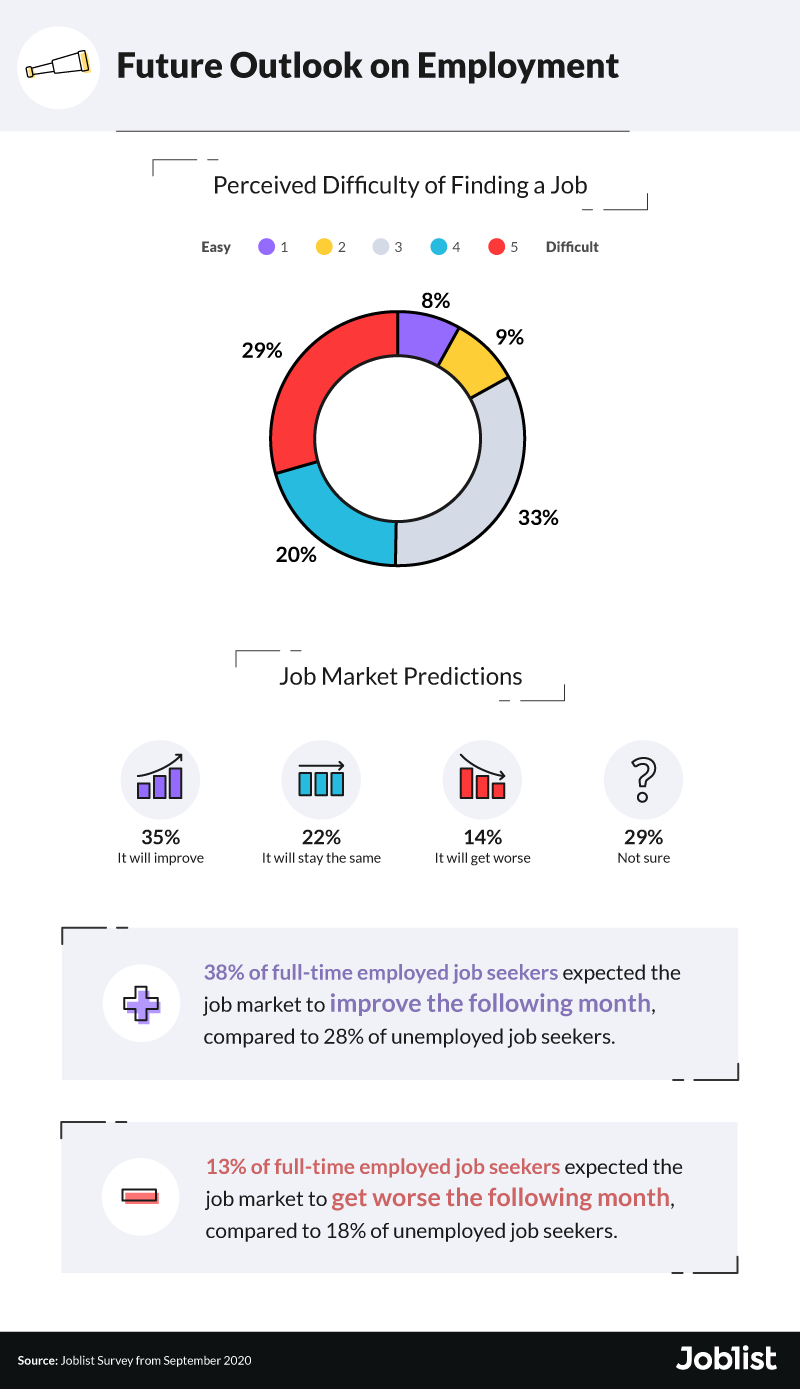
Conclusion
As the economy and job market continues to show signs of improvement, job seeker perceptions about the difficulty of the job market have also improved from previous months. Unsurprisingly, workers in occupations that continue to be in high demand view the job market as less challenging than other types of workers. While a high degree of uncertainty remains about the future of the job market, some workers are more optimistic. Moreover, plenty of employed job seekers are forging ahead with their job searches during these volatile times, adapting and searching for jobs that are suited to their current wants and needs.
The pandemic has impacted how businesses hire, which businesses are hiring, how people search for jobs, and what kinds of jobs they want. Many job seekers are urgently looking for new work and learning to adapt to the evolving job market landscape. In the coming months, Joblist will continue studying how the pandemic has impacted the job market and job seekers in particular.
It’s more important than ever for every person to find the right job for their specific needs. At Joblist, we know every job search is different. Helping you find the right job means surfacing results tailored to your experience, industry, and job priorities. Whether you’re a recent graduate, unemployed due to COVID-19, or looking for a remote-work opportunity that will let you keep your home office, Joblist will curate personalized matches based on criteria that you define. Even better, you're not alone in the process — Joblist enables you to share the list of jobs you're interested in with your friends, family, and others in your network so that they can also participate in your job search to make it a little less stressful.
Methodology
We surveyed 5,320 American job seekers about their outlook on the current job market and expectations for the future. We also surveyed an additional 5,149 about how the COVID-19 pandemic was impacting their job search.
All 10,469 survey respondents were Joblist users. The surveys were conducted over the course of September 2020.
This data has not been weighted, and it comes with some limitations. All of the information in this study relies on self-reporting. With self-reporting, respondents may over- or underreport their answers and feelings to the questions provided.
Fair Use Statement
It’s difficult to predict exactly what the future will hold, but we hope this data helps paint a more vivid representation of the job market in America today. Share these findings with your readers for any noncommercial use by including a link back to this page so they have full access to our methodology and results.


